Best
Overall Guitar Tuning Tool
-
Overall: Accommodates 7-String Guitars And Dropped Tunings
-
Best Feature: An Improved Display For Easy Reading And Quick, Precise Tuning
-
TedScore™: 9/10
Best
Budget Guitar Tuning Tool
-
Overall: Produces a strong, fundamental tone
-
Best Feature: Fine-Tuned To Match An Exact 440Hz Standard Pitch
-
TedScore™: 7.5/10
Best
Value Guitar Tuning Tool
-
Overall: Compact and easy to carry anywhere
-
Best Feature: Has A Classic Fender Design For An Accurate And Precise Tuning
-
TedScore™: 8/10
Picking up the guitar presents its own set of challenges, especially when talking about tuning. Finding that perfect tune stands as a major hurdle on your journey to making beautiful music. It’s vital for ensuring your guitar remains in top condition and sounds fantastic.
In this post, we’ll cover the basics of how to tune guitar for beginners, which will offer you a better understanding of the process.
We’ll also guide you through various methods to simplify your tuning process and some essential tools to help you out, like a tuner and an app.
Plus, we’d give you a step-by-step guide to tuning your guitar!
Keep reading so you can tune your guitar like a pro and unleash your musical talent!
Why is a Tuned Guitar Important for Beginners?
Tuning a guitar is crucial for beginners who wish to learn the basics accurately. Beginner guitar players need to have properly tuned guitars, as it enables the guitar to sound at its best.
Additionally, proper guitar tuning helps you develop important basic skills for advanced techniques. It also lays the foundation for your chord progression and tunes your ear to identify and replicate musical notes correctly.
Tuning is essential for any musician and helps them understand guitar-playing techniques better. Keeping all the guitar strings in tune is vital, as it enables the musician to understand various string combinations and frequencies, which is essential for mastering the guitar.
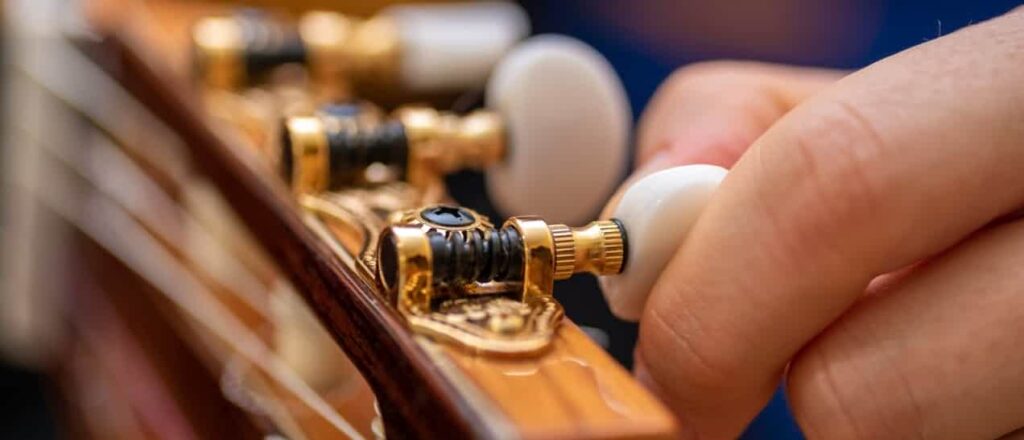
Understanding the Basics of Guitar Tuning
The tuning process involves adjusting the tension on each of the 6 strings by turning the tuning pegs. The fret method of standard guitar tuning starts from the thickest, lowest-pitched string, the 6th string, at the top of the neck. The 1st string, the thinnest and highest-pitched, is located at the bottom of the neck.
“E-very B-oy G-ets D-onuts A-fter E-ating” is useful for remembering the guitar string part names. It takes time, patience, and discipline to master the art of tuning a guitar properly, but it’s an essential skill to learn.
Furthermore, regularly tuning your guitar is of great importance to keep it sounding great and to keep it in good condition. By mastering the basics of guitar tuning, every aspiring musician can play their favourite tunes on a perfectly tuned instrument.
Methods to Tune a Guitar
Tuning your guitar is a crucial process that every beginner must learn. There are several methods you can use to tune your guitar. The most traditional way is to tune by ear alone. Understanding might take some time, but it helps improve your pitch recognition and other guitar skills. Alternatively, you can use different methods to do so. Check them out below!
1. Tuning a Guitar with a Tuner
This same method is one of the most popular methods for tuning a guitar. When using guitar tuners, it’s important to know the standard tuning pattern, E-A-D-G-B-E, starting from the thickest and lowest-pitched strings (the sixth string) at the top of the neck. Begin by turning on the tuner and plucking each string one by one. The tuner will show whether the note is sharp or flat.
Use the tuning pegs to adjust the pitch until the tuner shows that the desired pitch has been reached. Tightening a string increases the tension and raises (sharpens) the pitch, while loosening it lowers (flattens) the note.
2. Tuning a Guitar Using a Reference Note
Another popular method is using a reference note. To tune a guitar using a reference note, start with the 6th string (the lowest-pitched string) and adjust the tension in the string until it matches the desired correct note. Then, place the index finger of your left hand at the 5th or fifth fret of the 6th string and “fret the note” to get a reference note for the A string.
Finally, tune the rest of the strings by matching their pitch to the reference note. This reliable method is helpful for beginners who may not have a trained ear for tuning real guitar tones but want to ensure their guitar is playing in tune.
3. Using an App for Tuning
One of the easiest and most convenient ways for beginners to tune their guitar is to use an app, with several free and paid ones available for Android and iOS devices. They’re fast, reliable, and easy to use.
Simply place your smartphone close to the guitar’s sound hole and pluck each string individually to use guitar tuning apps. Adjust the tuning pegs according to the pitch readings displayed on the screen.
4. Using a Plug-in/Pedal to Tune
For electric guitar players, plug-ins or pedal tuners can make tuning their instruments easy and efficient. These devices plug directly into the guitar’s audio jack and pick up on the string’s audio frequency for accurate tuning.
To use a tuner pedal, simply plug your guitar into the pedal, activate the tuner, and adjust your strings until the display shows that each one is in tune.
When using a pedal or multi-effects pedal, the tuner can often be activated by holding down the left footswitch for a second. Clip-on tuners are another popular option for electric tuners when tuning either acoustic guitars or electric guitars.
A Beginner's Step-by-Step Guide to Tuning a Guitar
Learning to tune a guitar is a fundamental skill that all beginner guitarists should master. Here’s a friendly 5-step guide to help you tune your guitar using a reference note like a pro.
Step 1:
Get to Know Your Guitar: Before tuning your guitar, it’s essential to understand its structure. Familiarize yourself with the different parts of the guitar, especially the tuning pegs on the guitar headstock.
Step 2:
Know Standard Tuning: Standard tuning refers to the most common tuning used by guitarists. The standard tuning for a guitar’s six strings, from the low e string being the first thickest string to the open b string being the thinnest, is E-A-D-G-B-E.
Step 3:
Get a Reference Note: You need a reference note to tune your guitar. You can use the same note from a piano, a tuning fork or even a guitar tuner app on your phone. The most common guitar-tuned reference note is A, which has a frequency of 440Hz.
Step 4:
Tune the Lowest String: Start by tuning the lowest-pitched sixth guitar string to the reference note. Turn the tuning peg at the headstock until the pitch of the sixth string matches the reference note.
Step 5:
Tune the Remaining Strings: Once the sixth and open string is in tune, you can tune the remaining open strings. Place your finger on the fifth fret of the sixth string and play the note. Then, pluck the open fifth string and turn the tuning peg until it matches the sound of the fifth fret of the sixth string. Repeat this process for the rest of the strings.
How Often Should you Tune your Guitar?
One of the most essential aspects of playing guitar is tuning it correctly. Tuning should be done every time you play or practice. This will ensure accurate sound production, and your ear will grow accustomed to properly tuned pitches.
Sometimes, frequent tuning is necessary when the guitar strings are new.

Additionally, tuning your guitar while playing can help you improve as a musician. The more you pay attention to the sound your guitar produces, the better you will get at playing it.
Essential Tools for
Guitar Tuning

PERFECT FOR: all guitar players
FEATURES: Has a classic Fender design for an accurate and precise tuning
OTHER INFO: Comes with a 360-degree adjustable swivel for convenient tuning
Fender Original Clip-On Tuner
When you check the price above, you’ll see there are loads of great places to buy this item. Our personal favorite is Gear4music.
It is the largest music retailer in the UK and fast becoming the most respected online music shop in the US too. Their customer service is excellent, they have competitive prices, really fast shipping, and usually have the longest guarantee.
Most professional musicians use Gear4music, so there is no reason why you shouldn’t too!
- Designed with a bright LED screen
- Compact and easy to carry anywhere
- Lets you tune with complete ease, even in the darkest of venues
- A little expensive compared to other brands
The professional musician who wrote this article combined many things,
from the product build, manufacturer’s reputation through to feedback
from other users, to create our famous TedScore™.
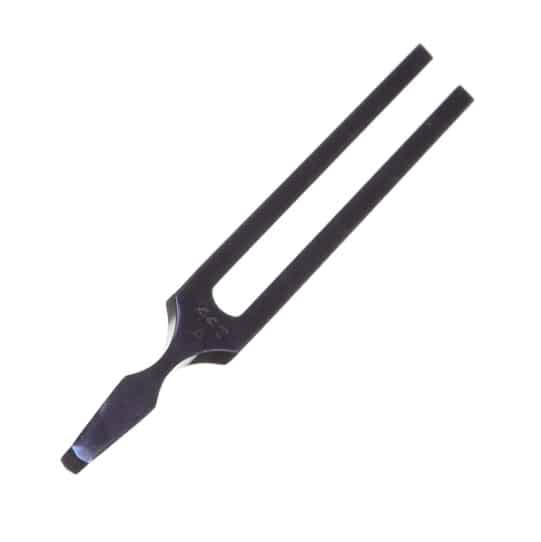
PERFECT FOR: all guitarists
FEATURES: Fine-tuned to match an exact 440Hz standard pitch
OTHER INFO: Has a shaped handle that provides optimal playability
John Walker Tuning Fork, A
When you check the price above, you’ll see there are loads of great places to buy this item. Our personal favorite is Gear4music.
It is the largest music retailer in the UK and fast becoming the most respected online music shop in the US too. Their customer service is excellent, they have competitive prices, really fast shipping, and usually have the longest guarantee.
Most professional musicians use Gear4music, so there is no reason why you shouldn’t too!
- Produces a strong, fundamental tone
- Comfortable to hold
- Perfect for therapeutic settings
- May not be as versatile as electronic tuners or other tuning methods
The professional musician who wrote this article combined many things,
from the product build, manufacturer’s reputation through to feedback
from other users, to create our famous TedScore™.
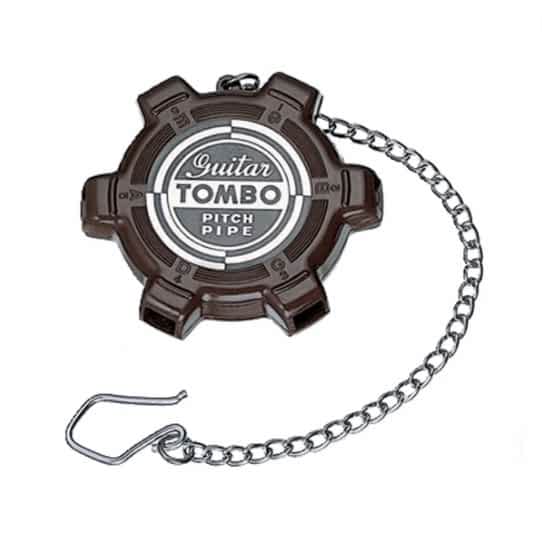
PERFECT FOR: all guitarist players
FEATURES: With clearly labelled E A D G B E pipes in a smooth plastic casing
OTHER INFO: Easy to use with the standard tuning for the guitar
Tombo Pitchpipe
When you check the price above, you’ll see there are loads of great places to buy this item. Our personal favorite is Gear4music.
It is the largest music retailer in the UK and fast becoming the most respected online music shop in the US too. Their customer service is excellent, they have competitive prices, really fast shipping, and usually have the longest guarantee.
Most professional musicians use Gear4music, so there is no reason why you shouldn’t too!
- Perfect for travelling musicians with the attached chain
- Has everything you need to stay in tune
- Ideal for quick adjustments on the stage
- May not be as accurate as an electronic tuner or other tuning methods
The professional musician who wrote this article combined many things,
from the product build, manufacturer’s reputation through to feedback
from other users, to create our famous TedScore™.

PERFECT FOR: acoustic guitar, electric, and bass guitar players
FEATURES: With an improved display for easy reading and quick, precise tuning
OTHER INFO: Accommodates 7-string guitars and dropped tunings
Korg GA-50 Guitar Tuner
When you check the price above, you’ll see there are loads of great places to buy this item. Our personal favorite is Gear4music.
It is the largest music retailer in the UK and fast becoming the most respected online music shop in the US too. Their customer service is excellent, they have competitive prices, really fast shipping, and usually have the longest guarantee.
Most professional musicians use Gear4music, so there is no reason why you shouldn’t too!
- With memory backup
- Has excellent battery life, which allows up to 135 hours of use
- Reliable with fabulous functionality
- Provides accurate tunings
- Does not have a built-in metronome
The professional musician who wrote this article combined many things,
from the product build, manufacturer’s reputation through to feedback
from other users, to create our famous TedScore™.

PERFECT FOR: acoustic guitarists
FEATURES: With a highly sensitive piezo transducer
OTHER INFO: Designed with a non-marring soundhole clip
D'Addario NS Micro Soundhole Tuner
When you check the price above, you’ll see there are loads of great places to buy this item. Our personal favorite is Gear4music.
It is the largest music retailer in the UK and fast becoming the most respected online music shop in the US too. Their customer service is excellent, they have competitive prices, really fast shipping, and usually have the longest guarantee.
Most professional musicians use Gear4music, so there is no reason why you shouldn’t too!
- With a bright, multi-colour display
- Has a 435 – 455hz calibration range
- Designed to sit in the acoustics soundhole to provide a discreet tuning
- Offers exceptional tuning accuracy
- Not suitable to use in noisy environments
The professional musician who wrote this article combined many things,
from the product build, manufacturer’s reputation through to feedback
from other users, to create our famous TedScore™.
How To Tune Guitar For Beginners
Summary
Congratulations on taking the first step towards learning how to tune your guitar! Tuning your guitar is an essential skill that every beginner guitarist should know. It may seem daunting at first, but you can tune your guitar easily with a little practice.
Remember to always start by tuning your guitar to a standard pitch, and then you can fine-tune each string. You can always experiment with other tuning methods to find what works best for you. Also, don’t forget to stretch your strings before tuning to avoid any unwanted pitch changes.
Now, grab your guitar and tuner and enjoy practising!
And don’t forget – if you don’t yet have a capo; our article Best Guitar Capos could be seriously useful for you!
FAQ's
Answer
For beginners, standard tuning (EADGBE) is the most common and recommended tuning, as it’s used in many popular songs and provides a good foundation for learning basic chords and scales on the guitar. However, alternate tunings can be fun to experiment with once you understand standard tuning.
The correct tuning for a guitar depends on the player’s preference and the song they want to play, but standard tuning (EADGBE) is the most commonly used tuning and is a good starting point for beginners. You can use a guitar tuner or tune the guitar by ear using a reference pitch to ensure your guitar is in the correct note and tune.
Tuning is crucial because it ensures that your guitar produces the correct pitch for each string, which is necessary for playing in tune with other musicians and creating clear, pleasant-sounding chords and melodies. Playing an out-of-tune instrument can also be frustrating and discouraging for beginners, so developing good tuning habits early on is important.
To make your guitar stay in tune longer, you can stretch your strings before playing, wrap them around the tuning pegs, lubricate the nut and bridge saddles, use quality strings, and avoid extreme temperature and humidity changes. Regular maintenance and keeping your guitar in a stable environment can also help prolong tuning stability.
To tune a classical guitar, start by tuning the low E string to a reference pitch, such as a piano or tuning fork. Then, tune the remaining strings in relation to the tuned string, using the fifth-fret method or an electronic tuner.


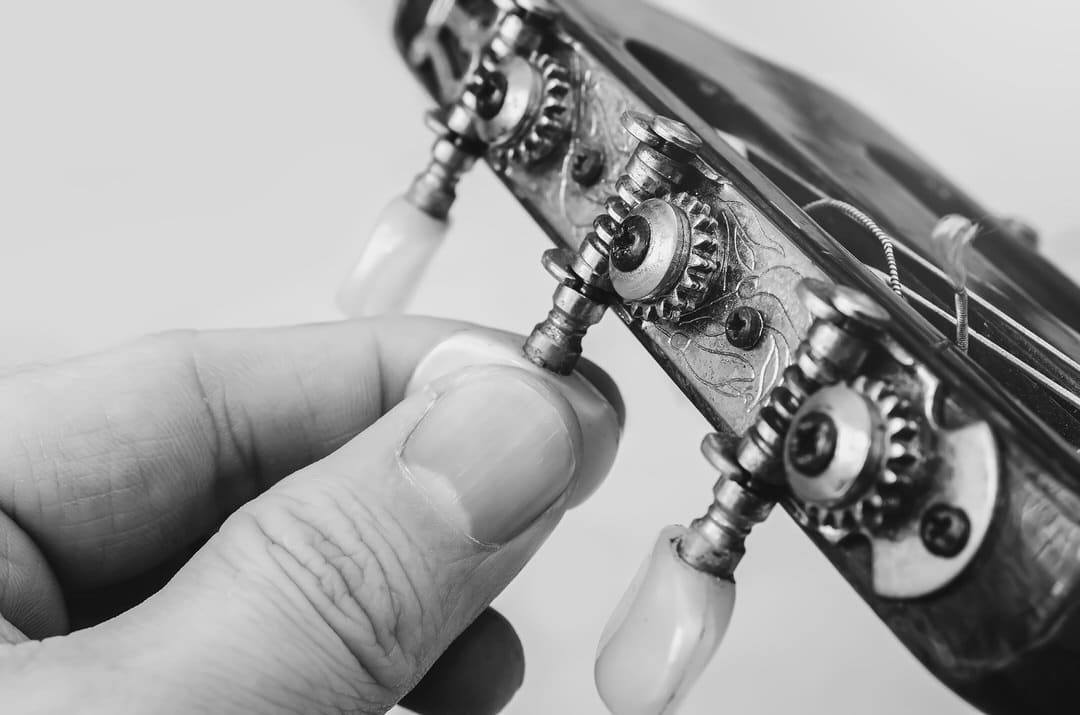







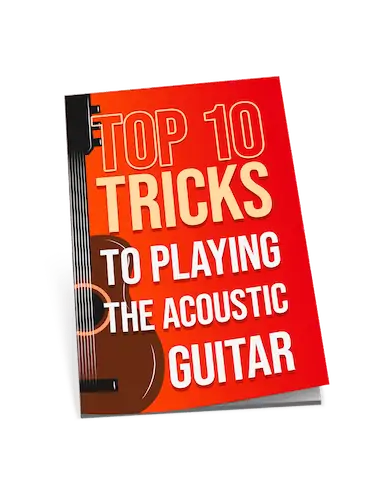
I asked my guitar if it was in tune…the response was ‘G string attached’. Guess I need to use one of those tuner thingies more often, lol.
Interesting article, Hugh Richardson. However, I have to ask, aren’t we glossing over the importance of developing an ear for tuning without technological aid? Let’s not forget the true essence of music mastery lies beyond digital conveniences.
True! But also, tech can be a great starting point for total beginners.
I second this! Learning to tune by ear is an invaluable skill that every musician should aspire to develop.
hey, so about those apps you mentioned for tuning – got any favs? i’m kinda new to this & would appreciate a nudge in the right direction. thanks man
Really love how you’ve broken down the tuning steps, Hugh Richardson! It’s super helpful for beginners to get each part right without feeling overwhelmed. Cheers!